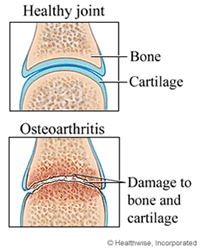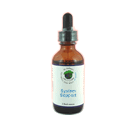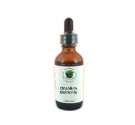|
|
Cartilage/Disc Support Remedy
 |
A firm, gelatinous substance called cartilage cushions the ends of the bones in the joints. Articular cartilage covers the ends of the bones like upholstery fabric on a chair. You may have seen cartilage at the end of chicken leg bones. Healthy cartilage has a smooth, slippery surface that allows two bones to glide easily in motion.
Because of the impact sustained by articular cartilage, there are no blood vessels in the cartilage to deliver moisture and its food, nor to remove its wastes. Instead, the cartilage receives its nourishment from fluid present around the joint. The synovial fluid is constantly being replaced-providing more nutrients and removing wastes.
When you're resting and not moving the joint, your cartilage absorbs nourishment from the surrounding synovial fluid. Your joint also releases its wastes into the joint fluid. Weight-bearing exercise compresses or squeezes your cartilage of the relevant joints. The compressed or squeezed cartilage oozes out some of its fluid containing wastes. When you release the pressure, the joint soaks up fresh fluid.
Cartilage is found in many areas in the bodies of humans and other animals, including the joints between bones, the rib cage, the ear, the nose, the elbow, the knee, the ankle, the bronchial tubes and the intervertebral discs. It is not as hard and rigid as bone but is firmer and less flexible than muscle.
Fun Facts
- About 85 percent of cartilage is water.
- The cartilage in our noses doesn't stop growing.
Health Conditions
- Achondroplasia: Reduced proliferation of chondrocytes, resulting in dwarfism.
- Costochondritis: Inflammation of cartilage in the ribs, causing chest pain.
- Osteoarthritis: Bone on bone in joints, reduced motion, and pain.
- Relapsing polychondritis: a destruction of cartilage, especially of the nose and ears, causing disfiguration. Death occurs by suffocation as the larynx loses its rigidity and collapses.
- Spinal disc herniation : Asymmetrical compression of an intervertebral disc ruptures the sac-like disc, causing a herniation of its soft content. The hernia often compresses the adjacent nerves and causes back pain.
- Traumatic rupture or detachment, common in the knees.
Suggestions To Strengthen
- Keep hydrated, it is 85% water.
- Exercise helps speed the exchange of used fluid in cartilage with nutrient- rich synovial fluid. It also helps build bone density and muscle strength. Exercise helps keep your joints, bones and muscles healthy.
- Sugar, sweet drinks, processed foods, tea and coffee will all strip magnesium, calcium and vitamin C from the body. All of these elements are vital for the formation and repair of bone, muscle, cartilage and synovial fluid.
- Look into Prolotherapy (find a doctor near) to rebuild cartilage before you EVER let anyone surgically cut into your body.
|
|
| |
Cartilage/Disc Support Remedy
Complete support remedy for Cartilage, Disc and related functions
$14.95
Read/Write Reviews
|
 Add
To Cart Add
To Cart |
 |
 |
Lymphatic Support Remedy
Complete support remedy for Lymphatic and related functions
$14.95
|
 Add
To Cart Add
To Cart |
 |
 |
Liver Support Remedy
Complete support remedy for Liver and related functions
$14.95
|
 Add
To Cart Add
To Cart |
 |
 |
Fatty Acids Complex
Quantum Style fatty acid supplement.
$14.95
|
 Add
To Cart Add
To Cart |
 |
 |
|
|




